National Flag

The National Flag is a horizontal tricolour of deep saffron (kesaria) at the top, white in the middle and dark green at the bottom in equal proportion. The ratio of width of the flag to its length is two to three. In the centre of the white band is a navy-blue wheel which represents the chakra. Its design is that of the wheel which appears on the abacus of the Sarnath Lion Capital of Ashoka. Its diameter approximates to the width of the white band and it has 24 spokes. The design of the National Flag was adopted by the Constituent Assembly of India on 22 July 1947.
National Bird

The Indian peacock, Pavo cristatus, the national bird of India, is a colourful, swan-sized bird, with a fan-shaped crest of feathers, a white patch under the eye and a long, slender neck. The male of the species is more colourful than the female, with a glistening blue breast and neck and a spectacular bronze-green train of around 200 elongated feathers. The female is brownish, slightly smaller than the male and lacks the train. The elaborate courtship dance of the male, fanning out the tail and preening its feathers is a gorgeous sight.
National Flower

Lotus (Nelumbo Nucipera Gaertn) is the National Flower of India. It is a sacred flower and occupies a unique position in the art and mythology of ancient India and has been an auspicious symbol of Indian culture since time immemorial.
India is rich in flora. Currently available data place India in the tenth position in the world and fourth in Asia in plant diversity. From about 70 per cent geographical area surveyed so far, 47,000 species of plants have been described by the Botanical Survey of India (BSI).
National Tree

Indian fig tree, Ficus bengalensis, whose branches root themselves like new trees over a large area. The roots then give rise to more trunks and branches. Because of this characteristic and its longevity, this tree is considered immortal and is an integral part of the myths and legends of India. Even today, the banyan tree is the focal point of village life and the village council meets under the shade of this tree.
National Anthem
Jana Gana Mana
The composition consisting of the words and music of the first stanza of the late poet Rabindra Nath Tagore’s song known as “Jana Gana Mana” is the National Anthem of India.The above is the full version of the Anthem and its playing time is approximately 52 seconds. A short version consisting of the first and last lines of the National Anthem is also played on certain occasions.Playing time of the short version is about 20 seconds.
National Emblem

The state emblem is an adaptation from the Sarnath Lion Capital of Ashoka. In the original, there are four lions, standing back to back, mounted on an abacus with a frieze carrying sculptures in high relief of an elephant, a galloping horse, a bull and a lion separated by intervening wheels over a bell-shaped lotus. Carved out of a single block of polished sandstone, the Capital is crowned by the Wheel of the Law (Dharma Chakra) .
In the state emblem, adopted by the Government of India on 26 January 1950, only three lions are visible, the fourth being hidden from view. The wheel appears in relief in the centre of the abacus with a bull on right and a horse on left and the outlines of other wheels on extreme right and left. The bell-shaped lotus has been omitted. The words Satyameva Jayate from Mundaka Upanishad , meaning ‘Truth Alone Triumphs’, are inscribed below the abacus in Devanagari script.
National Calendar
The national calendar based on the Saka Era, with Chaitra as its first month and a normal year of 365 days was adopted from 22 March 1957 along with the Gregorian calendar for the following official purposes:
(i) Gazette of India,
(ii) news broadcast by All India Radio,
(iii) calendars issued by the Government of India and
(iv) Government communications addressed to the members of the public.
Dates of the national calendar have a permanent correspondence with dates of the Gregorian calendar, 1 Chaitra falling on 22 March normally and on 21 March in leap year.
National River

The Ganga or Ganges is the longest river of India flowing over 2,510 kms of mountains, valleys and plains. It originates in the snowfields of the Gangotri Glacier in the Himalayas as the Bhagirathi River. It is later joined by other rivers such as the Alaknanda, Yamuna, Son, Gumti, Kosi and Ghagra. The Ganga river basin is one of the most fertile and densely populated areas of the world and covers an area of 1,000,000 sq. kms. There are two dams on the river – one at Haridwar and the other at Farakka. The Ganges River Dolphin is an endangered animal that specifically habitats this river.
The Ganga is revered by Hindus as the most sacred river on earth. Key religious ceremonies are held on the banks of the river at cities such as Varanasi, Haridwar and Allahabad. The Ganga widens out into the Ganges Delta in the Sunderbans swamp of Bangladesh, before it ends its journey by emptying into the Bay of Bengal.
National Animal

The magnificent tiger, Panthera tigris is a striped animal. It has a thick yellow coat of fur with dark stripes. The combination of grace, strength, agility and enormous power has earned the tiger its pride of place as the national animal of India. Out of eight races of the species known, the Indian race, the Royal Bengal Tiger, is found throughout the country except in the north-western region and also in the neighbouring countries, Nepal, Bhutan and Bangladesh. To check the dwindling population of tigers in India, ‘Project Tiger’ was launched in April 1973. So far, 27 tiger reserves have been established in the country under this project, covering an area of 37,761 sq km.
National Song
Vande Mataram
The song Vande Mataram, composed in Sanskrit by Bankimchandra Chatterji, was a source of inspiration to the people in their struggle for freedom. It has an equal status with Jana-gana-man a. The first political occasion when it was sung was the 1896 session of the Indian National Congress.
National Fruit

A fleshy fruit, eaten ripe or used green for pickles etc., of the tree Mangifera indica, the mango is one of the most important and widely cultivated fruits of the tropical world. Its juicy fruit is a rich source of Vitamins A, C and D. In India there are over100 varieties of mangoes, in different sizes, shapes and colours. Mangoes have been cultivated in India from time immemorial. The poet Kalidasa sang its praises. Alexander savoured its taste, as did the Chinese pilgrim Hieun Tsang. Mughal emperor Akbar planted 100,000 mango trees in Darbhanga, Bihar at a place now known as Lakhi Bagh.
National Game

India has conquered the podium when it comes to the game of Hockey. Our nation has an excellent record with eight Olympic gold medals. Indian hockey’s golden period was from 1928-56, when the Indian hockey team won six successive Olympic gold medals. Team also won the 1975 World Cup besides two more medals (silver and a bronze). The Indian Hockey Federation gained global affiliation in 1927 and joined the International Hockey Federation (FIH).
Source : National Portal of India.






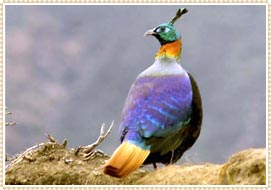

 One of the most popular national symbols of Jamaica, The Jamaica National Flag was first raised on
One of the most popular national symbols of Jamaica, The Jamaica National Flag was first raised on 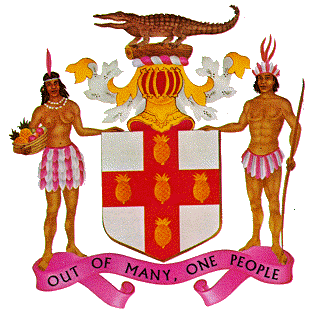 The Jamaican national motto is ‘Out of Many One People’, based on the population’s multi-racial roots. The motto is represented on the Coat of Arms, showing a male and female member of the Taino tribe standing on either side of a shield which bears a red cross with five golden pineapples. The crest shows a Jamaican crocodile mounted on the Royal Helmet of the British Monarchy and mantling.
The Jamaican national motto is ‘Out of Many One People’, based on the population’s multi-racial roots. The motto is represented on the Coat of Arms, showing a male and female member of the Taino tribe standing on either side of a shield which bears a red cross with five golden pineapples. The crest shows a Jamaican crocodile mounted on the Royal Helmet of the British Monarchy and mantling.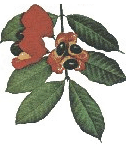 “Carry me ackee go a Linstead Market, not a quattie wud sell” is a line in the popular Jamaican folk song ‘Linstead Market’.
“Carry me ackee go a Linstead Market, not a quattie wud sell” is a line in the popular Jamaican folk song ‘Linstead Market’.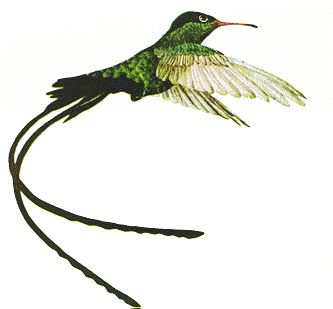 The doctor bird or swallow tail humming bird, is one of the most outstanding of the 320 species of hummingbirds. It lives only in Jamaica. These birds’ beautiful feathers have no counterpart in the entire bird population and they produce iridescent colours characteristic only of that family.
The doctor bird or swallow tail humming bird, is one of the most outstanding of the 320 species of hummingbirds. It lives only in Jamaica. These birds’ beautiful feathers have no counterpart in the entire bird population and they produce iridescent colours characteristic only of that family. 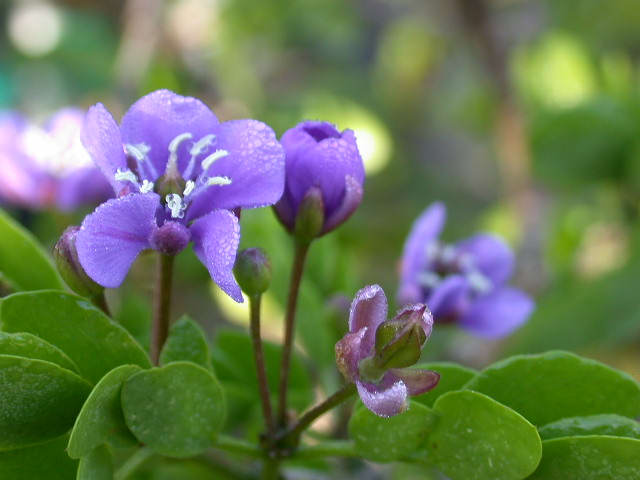 The Lignum Vitae was found here by Christopher Columbus. Its name, when translated from Latin, means “wood of life” – probably adopted because of its medicinal qualities. The short, compact tree is native to continental tropical American and the West Indies. In Jamaica it grows best in the dry woodland along
The Lignum Vitae was found here by Christopher Columbus. Its name, when translated from Latin, means “wood of life” – probably adopted because of its medicinal qualities. The short, compact tree is native to continental tropical American and the West Indies. In Jamaica it grows best in the dry woodland along 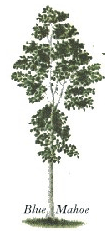 The Blue Mahoe is the national tree of Jamaica. It is indigenous to the island and grows quite rapidly, often attaining 20m (66ft) or more in height. In wetter districts it will grow in a wide range of elevations, up to 1200m (4000 ft.) and is often used in reforestation.
The Blue Mahoe is the national tree of Jamaica. It is indigenous to the island and grows quite rapidly, often attaining 20m (66ft) or more in height. In wetter districts it will grow in a wide range of elevations, up to 1200m (4000 ft.) and is often used in reforestation.





















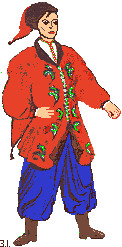
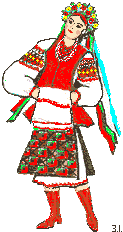 Constant fighting made excellent foot soldiers and cavalrymen out of them. In the middle of the 17th century, headed by Hetman Bohdan Khmelnytsky, an astute statesman and daring general, the Cossacks fought a war of independence against Poland. It was the time of growing national identity but Bohdan Kmelnytsky realized too well that he did not have enough forces to overpower all the enemies on all the fronts and he was forced to bring Ukraine under the protection of the Russian Czar. Unfortunately, the insatiable appetites of the imperial Russia were such that Ukraine was gobbled up whole and by the end of the 18th century was turned into a backwater province. Even the Ukrainian language came under danger of extinction, but thanks to the efforts of prominent Ukrainian literati with the national revival on their minds - among whom Taras Shevchenko stands as the most distinguished figure - the Ukreinian language and literature did nit die and continued their development despite the hard pressure aimed at their suppression.
Constant fighting made excellent foot soldiers and cavalrymen out of them. In the middle of the 17th century, headed by Hetman Bohdan Khmelnytsky, an astute statesman and daring general, the Cossacks fought a war of independence against Poland. It was the time of growing national identity but Bohdan Kmelnytsky realized too well that he did not have enough forces to overpower all the enemies on all the fronts and he was forced to bring Ukraine under the protection of the Russian Czar. Unfortunately, the insatiable appetites of the imperial Russia were such that Ukraine was gobbled up whole and by the end of the 18th century was turned into a backwater province. Even the Ukrainian language came under danger of extinction, but thanks to the efforts of prominent Ukrainian literati with the national revival on their minds - among whom Taras Shevchenko stands as the most distinguished figure - the Ukreinian language and literature did nit die and continued their development despite the hard pressure aimed at their suppression.

















